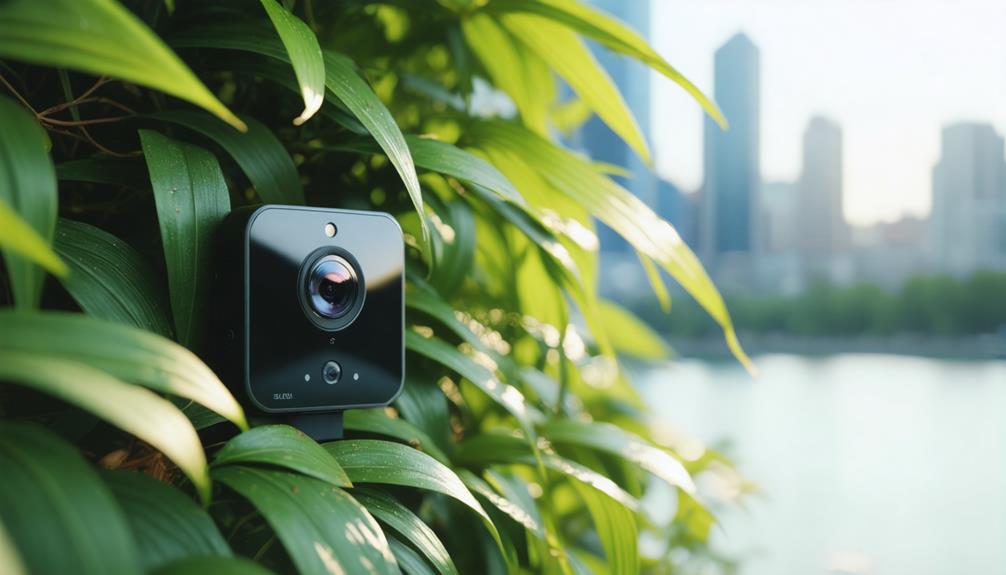
Brainstorm Security Shop

For Orders Over $199

On Any Of Our Products

Details On Refund Page
You’ve probably considered what you’d do in a threatening situation when help seems far away. A personal alarm with a panic button could be your answer, providing a quick and effective way to signal for assistance. These devices aren’t just for hikers or late-night workers; they’re a practical addition for anyone seeking an extra layer of security. But how do you know which device fits your lifestyle or what features are essential? Let’s explore the different types available and the key considerations you should keep in mind when selecting one. You might be surprised at the peace of mind they can offer.
Personal alarms can significantly enhance your safety by providing instant alert capabilities during emergencies. When you’re in a situation where you feel threatened or in danger, having a personal alarm means you’ve got a tool that can help deter an attacker or alert others nearby. It’s an immediate way to make noise and create attention, which is often enough to scare off a potential assailant.
You can carry these devices anywhere you go, whether it’s on a late-night walk, during your commute, or in remote areas where you might find yourself alone. They’re especially useful if you’re vulnerable or if you often travel solo. Unlike other safety devices, personal alarms require no special training to use; you just press a button or pull a cord, depending on the model.
Moreover, the presence of a personal alarm can give you a greater sense of security, which in itself can be empowering. Knowing that you have a way to summon help or fend off an attacker can make you feel more confident and less anxious about moving through less secure environments or at odd hours.
Essentially, it’s a simple tool that supports your personal safety strategy without any complexities.
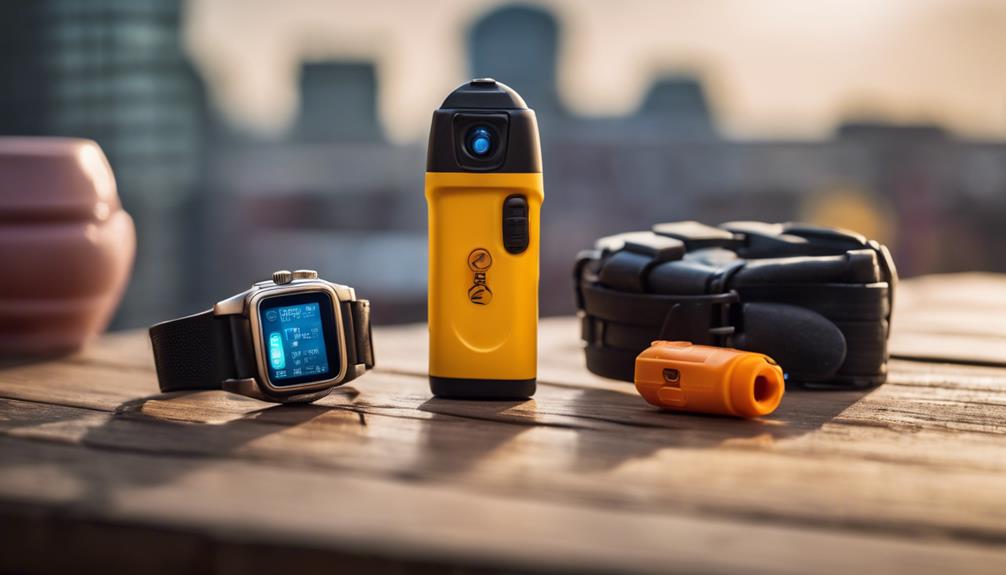
You’ll find several types of personal alarm systems available, each designed to meet specific safety needs.
One common type is the keychain alarm, which you can easily attach to your bag or belt. It’s handy, and you activate it by pulling a pin or pressing a button, emitting a loud noise to draw attention and deter attackers.
Another popular option is the pendant alarm, often used by the elderly or those with health issues. These are worn around the neck and feature a simple button that, when pressed, signals for help either through a loud siren or a silent alert to a monitoring service.
For more discreet protection, consider a wristband alarm. Similar in style to a watch or fitness band, these alarms blend in well with everyday wear while still providing quick access to an alert system.
There are also alarms designed for specific user groups, such as runners. These sport-focused devices often come with additional durability and weatherproofing, and some feature GPS tracking for added safety during outdoor activities.
Each type offers unique advantages, so you’ll want to choose one that aligns with your lifestyle and personal safety strategies.
When choosing a personal alarm, consider key features like volume, ease of use, and connectivity options to ensure maximum safety and effectiveness. You’ll want a device that’s loud enough to be heard from a distance, typically around 120 to 130 decibels. This can help draw attention and deter an attacker or alert others in case of an emergency.
Ease of use is crucial, especially in stressful situations. Look for alarms that you can activate quickly and effortlessly, ideally with one hand. Avoid complicated mechanisms that could delay activation. The alarm should be accessible, with the panic button easy to find by touch.
Connectivity options can enhance your alarm’s effectiveness. Some modern alarms offer features like GPS tracking or connectivity to your smartphone via an app. This can be invaluable if you need to alert loved ones or emergency services with your location details immediately.
Additionally, consider the durability and design of the alarm. It should be sturdy enough to withstand everyday wear and tear. A compact, discreet design might be important if you’ll be carrying it daily. Water-resistant features are an added bonus for all-weather reliability. These factors together will ensure you’ve got a reliable tool in your personal safety arsenal.
Understanding how panic buttons work is essential for maximizing their potential to keep you safe. Essentially, a panic button is a small, portable device designed to send an alert signal when you’re in distress. It’s typically a simple mechanism that requires minimal effort to activate, ensuring that you can use it quickly and without confusion during an emergency.
When you press the button, it triggers a response. This could be a loud, audible alarm designed to deter an attacker and alert nearby people to your situation. Alternatively, it might send a silent alert to a predetermined contact or a security service, indicating that you need immediate help. In some models, pressing the panic button can also send GPS coordinates to first responders, pinpointing your exact location.
You’ll often find that these devices are equipped with additional features to enhance their functionality. For example, some have built-in sirens or can be linked to your home security system for integrated responses. They’re typically lightweight and easy to carry, often attached to a keychain or wearable as a pendant. This accessibility ensures that you can always reach your panic button, even in a stressful situation.
Carrying a personal alarm offers significant safety benefits, particularly in alerting others quickly during an emergency. When you find yourself in a threatening situation, the loud sound emitted by these devices can deter an attacker and draw immediate attention to your location. It’s a simple tool, but it can make a huge difference in your personal safety.
Using your personal alarm isn’t just about warding off potential threats; it’s also about giving you a sense of security. Knowing you’ve got a way to call for help in your pocket or on your keychain boosts your confidence when you’re walking alone, especially at night or in unfamiliar areas. This can make you feel more comfortable and less anxious, allowing you to enjoy your daily activities without constant worry.
Moreover, personal alarms are incredibly user-friendly. You don’t need to be tech-savvy to operate them. A simple press of a button can make all the difference, ensuring that help is on the way when you need it most. They’re also portable and discreet, so you can carry them everywhere without them being a burden. This makes them an ideal choice for everyone, regardless of age or ability.

Now that you recognize the benefits of personal alarms, let’s help you choose the right one to meet your needs.
When selecting a personal alarm, consider its sound intensity. You’ll want an alarm that emits a sound of at least 120 decibels to effectively deter an attacker and attract attention. Look for models that state their decibel level clearly in the product specifications.
Next, think about size and ease of use. You need an alarm that’s small enough to carry comfortably but not so tiny that it’s difficult to activate in an emergency. Check if the panic button is easily accessible and if you can operate it quickly under stress.
Also, assess the durability of the alarm. It should be sturdy enough to withstand rough handling and possibly adverse weather conditions, especially if you’re often outdoors. A waterproof design can be a significant advantage.
Battery life is another critical factor. Opt for an alarm with a long-lasting battery, and consider whether you prefer a rechargeable model or one with replaceable batteries. This ensures your alarm is ready when you need it, without the worry of frequent replacements or recharges.
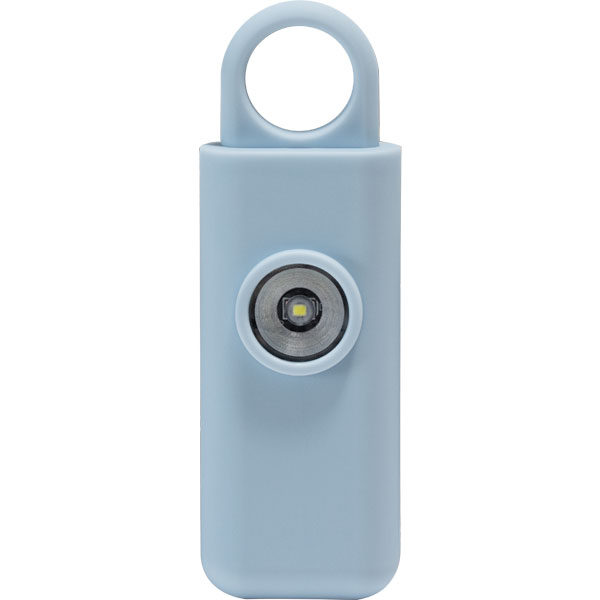
To maximize your safety, regularly test your personal alarm to ensure it’s functioning correctly. It’s easy to overlook this simple step, but a non-working alarm won’t help you in a crisis. Ensure the battery is always charged or fresh, and check that the sound emitted is loud enough to attract attention from a distance.
You should also familiarize yourself with the alarm’s features. Know exactly how to activate it quickly in various situations, whether you’re reaching into your pocket, your purse, or attaching it to your clothing. Practice using it so that if an emergency arises, you’re not fumbling or hesitating.
Carry your alarm in an accessible spot. Don’t bury it at the bottom of your bag. Instead, keep it where you can grab it easily without looking. If your alarm has a keychain attachment, consider hooking it to your belt loop or the strap of your bag where it’s visible. This not only makes it easy to reach but also acts as a deterrent to potential attackers.
Lastly, don’t ignore the psychological aspect. Just having the alarm can give you a sense of security, but remember, it’s a tool to enhance your safety, not a guarantee. Stay alert and aware of your surroundings at all times.
While personal alarms are generally legal to carry, it’s crucial to check local laws to ensure compliance and avoid potential legal issues. Depending on where you live, there might be specific regulations regarding the sound level of the alarm or the mechanism by which it’s activated. You don’t want to find yourself in a situation where your safety device actually puts you on the wrong side of the law.
Moreover, when choosing a personal alarm with a panic button, you must consider the safety features that best suit your needs. Look for devices that are easy to operate in stressful situations. The last thing you need is a panic button that’s hard to press or a device that malfunctions when you need it most. Ensure the alarm is loud enough to draw attention but not so loud that it could cause hearing damage.
Always test your device regularly to confirm it’s working properly. This includes checking battery life and ensuring the sound mechanism isn’t hindered by any defects. Regular maintenance can be the difference between a functioning alarm and a false sense of security.
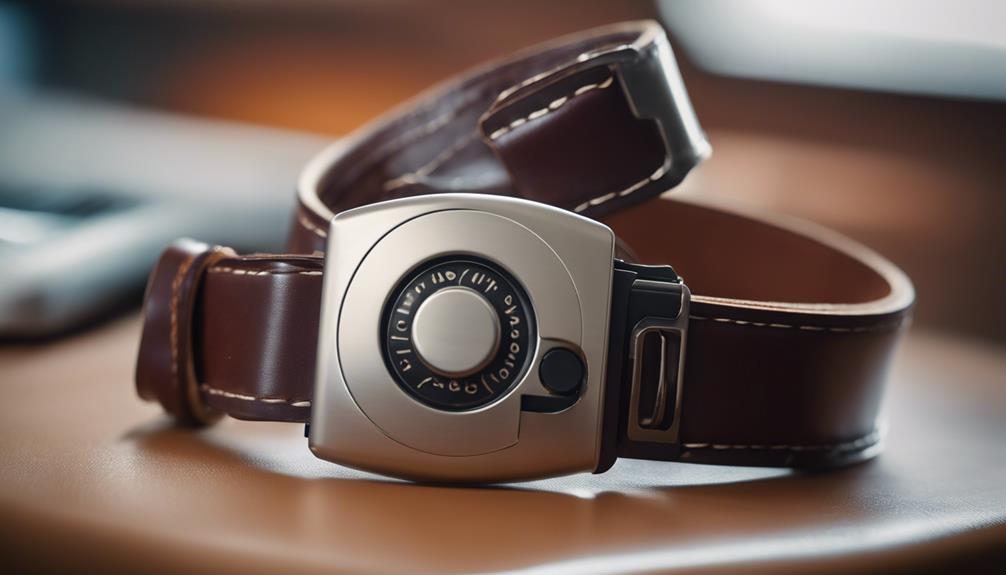
You’ve seen how essential a personal alarm with a panic button can be, offering not just peace of mind but real safety benefits.
Whether you’re a frequent traveler or simply seeking extra security, choosing the right model with the best features is crucial.
Remember to use it responsibly and stay aware of legal considerations. Keep it accessible, practice using it, and let it enhance your confidence and security wherever you go.
Stay safe!
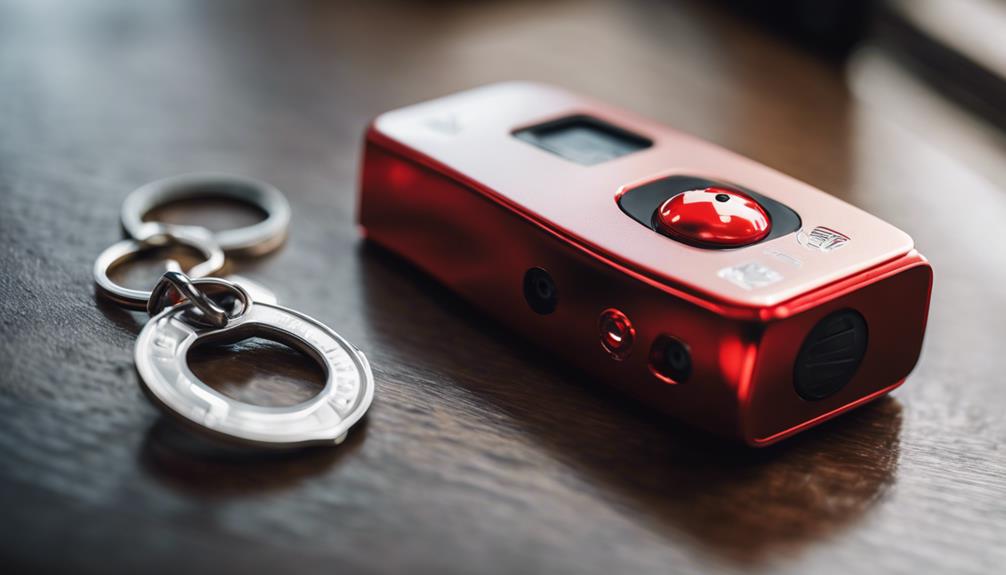
Brainstorm Security Shop
1867 Caravan Trail
Ste 105
Jacksonville, FL 32216
Call us toll free: (800) 859-5566